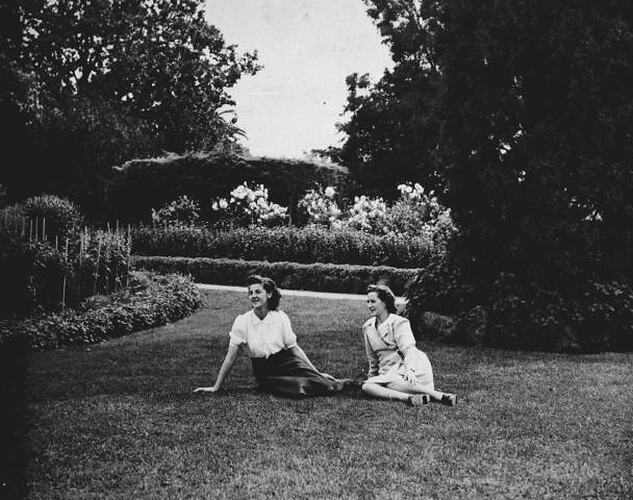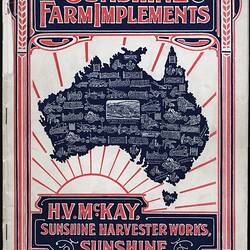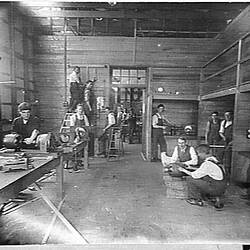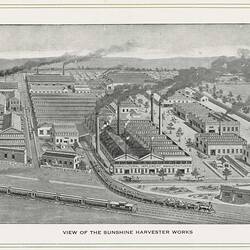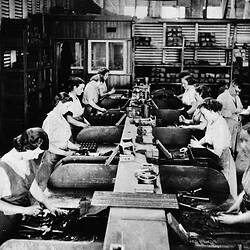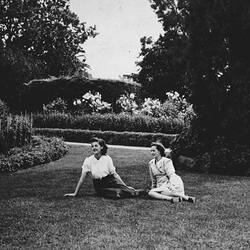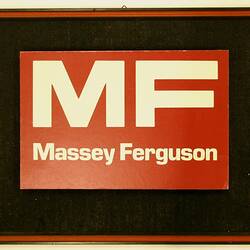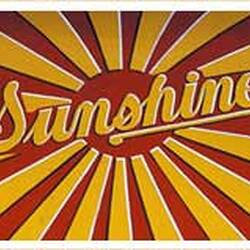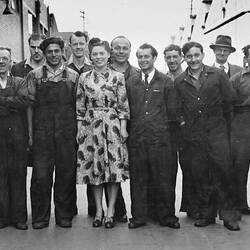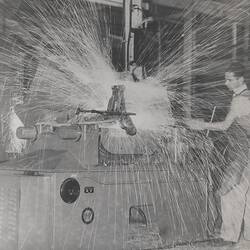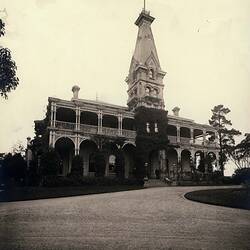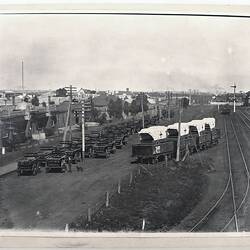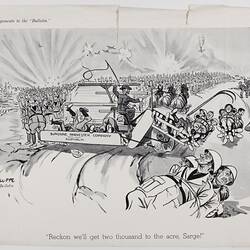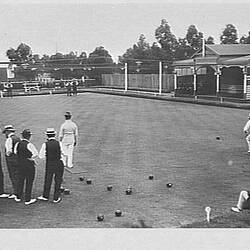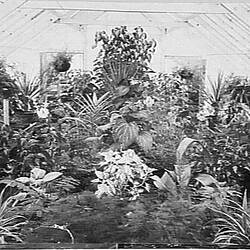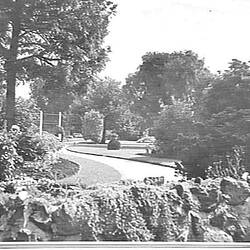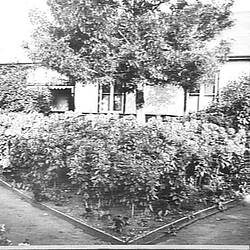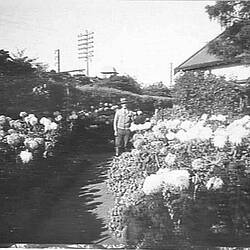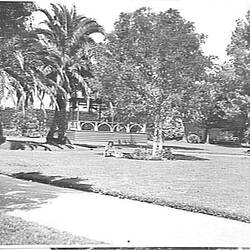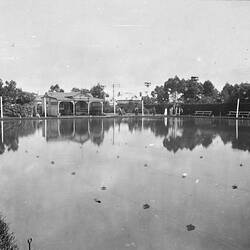Summary
History of the Sunshine Gardens, later re-named H.V McKay Memorial Gardens.
Development of the Sunshine Gardens commenced in 1909 when McKay commissioned Ballarat landscape gardener Mr Horsfall to draw up a plan for the eight acre site. The gardens faced the Sunshine Harvester Works, railway line and the Sunshine Estate which housed employees from the Sunshine Harvester Works. Inspired by the garden city movement, McKay's intention was to create a recreational site for his employees as well as for locals. The factory and gardens were connected by a footbridge built over the Sunshine railway line. An altered version of the footbridge still exists.
The gardens became a popular place for leisure and rest for employees from the Sunshine Harvester Works, their families and locals. Its many features appealed to a variety of leisurely pursuits. A tennis court and pavilion, created in 1909, entertained sport enthusiasts, while the bowling green occupied lawn bowlers. By 1917, the gardens also featured a conservatory and a rotunda where bands would perform, such as the Sunshine District Band, the Harvester Works Pipe Band and Australian Ladies World Scottish Pipe Band. The head gardener's cottage was also located in the gardens.
Adorning the gardens were two stone gateposts and gateway featuring a couple of lions. These sculptures were said to be later loaned to the Governor-General Lord Casey for a special occasion at his property in Berwick. The lions are believed to still be in Berwick, however the stone gateposts were stolen. It is believed that McKay's father Nathaniel, a stonemason, made the gateposts. In the 1920s, a wrought-iron gate was erected in the garden which was built by Sunshine Harvester's blacksmith Charlie Pippett.
The gardens were carefully tended to by four notable curators when it was under the management of the McKay firm. They included S.G Thompson (1909-1927), James Willan (1930-1939), Harold Gray (1939-1950) and F. Young (1950-1953). Their work in the gardens ensured that the prized Chrysanthemums and Dahlias were in bloom for the public to enjoy. By 1946, there were 7,000 Chrysanthemum plants sprouting in the gardens. Horse manure and foundry sand from the Sunshine Harvester Works were used to maintain the soil. The gardens were originally watered by a dam located in the Sunshine Harvester Works. Stony Creek provided the water for the dam.
Sunshine locals took pride in their gardens. In October 1910, angry Sunshine residents complained to the police about the vandalisation of the site by local boys who were pulling out recently planted trees. Aboriginal trackers were employed to find the perpetrators by following their footsteps. The trackers were led to the residence of boys who admitted to their involvement in the destruction of the trees.
In 1936, the local newspaper, The Sunshine Advocate, commented on the impact the gardens made on community life: "Here the band plays regularly; here the tennis fraternity and bowlers gather for play; here the church goers pass on Sundays and workers on weekdays. To this delightful spot come the children to play. Mothers bring their babies to the healthy surroundings; old men sit and talk; garden fetes are held and enthusiasts gather gardening hints from the staff."
There have been a number of alterations to the gardens since its establishment. In 1926, McKay donated land from the garden to build the Sunshine Presbyterian Church which still stands. The bandstand was removed (possibly in the 1960s), while the bowling green was extended to cover the tennis courts. The conservatory was burnt down and demolished in the 1990s.
In 1953, the gardens were donated to the newly established City of Sunshine by Cecil McKay. The site was renamed H.V McKay Memorial Gardens and is now under the management of Brimbank City Council. Local residents and groups such as the Friends of the H.V McKay Memorial Gardens also assist in the site's maintenance. Formed in 2007, the Friends group organises maintenance activities throughout the year to preserve the gardens' integrity. They also engage in fundraising and lobbying to maintain the gardens.
- References
- Friends of the McKay Memorial Gardens 2013, Friends of the McKay Memorial Gardens, Sunshine, Victoria,viewed 21 March 2013, <http://mckaygardens.blogspot.com.au> and <www.mckaygardens.org/index.html>
- 'H.V McKay Memorial Gardens', Victorian Heritage Database, viewed 21 March,<http://vhd.heritage.vic.gov.au/places/result_detail/11984?print=true>
- Aitken, R 2002, 'H.V McKay Memorial Gardens', in R. Aitken & M. Looker (eds), The Oxford Companion to Australian Gardens, Oxford University Press, South Melbourne.
- Bampton, B 2010, 'H.V McKay Gardens, Sunshine: An Industrial Garden 100 Years On', Australian Garden History, vol. 21, no.3, pp.10-15.
- Ford, O & Vines G. 2000, Brimbank City Council Post-contact Cultural Heritage Study: Place Reports for Heritage Areas and Individual Places, Volume 3, Brimbank City Council, viewed 21 March 2013, <http://www.brimbank.vic.gov.au/Our_Services/Building_Planning_Engineering/Strategic_Planning/Our_Heritage>
- Ford, O 2001,Harvester Town: The Making of Sunshine, 1890-1925. Sunshine and District Historical Society Inc, Sunshine.
- Mellor, J.H 1946, 'Mums and Chrysanthemums', Sunshine Review, vol. 3, no. 6, pp.1.
More Information
-
Keywords
Public Gardens, Horticulture, Leisure, Aboriginal People, agricultural industry
-
Localities
-
Authors
-
Article types
